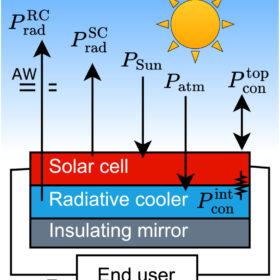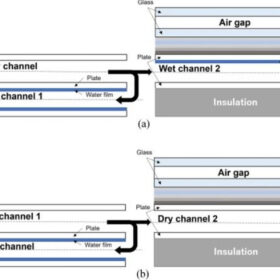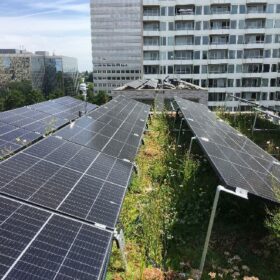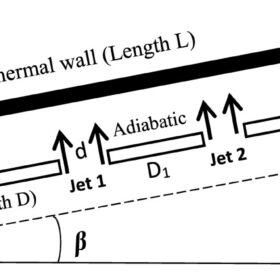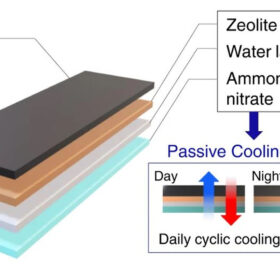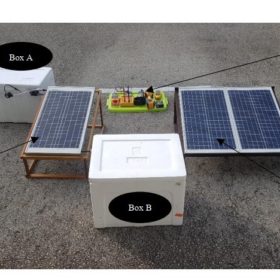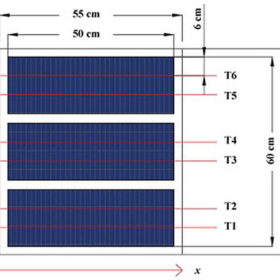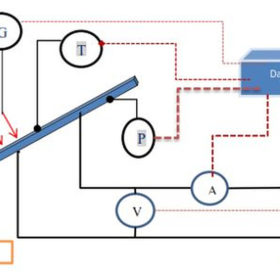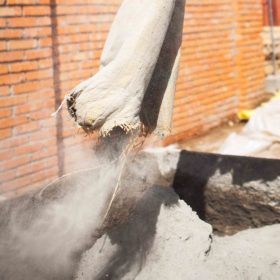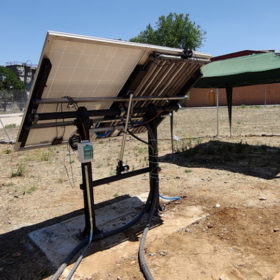New research shows potential of solar cells based on cement radiative coolers
Researchers in Italy have proposed the use of radiative coolers made of cementitious materials to reduce the operating temperature of solar panels. They incorporated Auger (AUG) and Shockley–Read–Hall (SRH) nonradiative recombination into their modeling and described the practical realization of the coolers as “attractive.”
Reducing solar module temperature via dew-point evaporative cooling
Japanese scientists have designed a cooling system that reduces the solar panel operating temperature at the air inlet of the module. It consists of a dew-point evaporative cooler that supplies the near-saturation air to wet air channels that are attached to the back of a PV panel.
Well-irrigated roofs with vegetation have cooling effect on PV systems
Scientists in the Netherlands have assessed how the so-called blue-green roofs can help reduce the operating temperature of rooftop PV panels and have found they provide a significant cooling effect. The irrigation system used for the research project relies on an additional water supply sourced from grey water from showers that is transformed into irrigation water.
Solar module cooling tech based on nanofluid jets
The system consists of a double jet of nanofluid in a 2D channel placed below a heating plate that adheres to the photovoltaic panel. It uses water mixed with copper nanoparticles as a nanofluid.
Passive solar module cooling tech based on water sorption
South Korean scientists have developed a WD-ER cooling system that can lower the operating temperature of a PV panel by up to 14.9 C, with an average heat transfer coefficient of 64.1 W/m2.
Cooling solar panels with bio-inspired coconut fiber
Malaysian scientists have tested bio-inspired coconut fiber to cool down solar modules. The cooling system features a moist coconut pith encapsulated with a polyurethane sheet. It is placed on the back of a PV module’s surface and acts as a heat sink.
Passive solar module cooling tech based on paraffin wax
Egyptian researchers have used paraffin wax as a phase-change material (PCM) to reduce the operating temperatures of PV modules. They have found that the material improves power yield by more than 15%, compared to a reference module without cooling.
Cooling solar modules with vacuum pressure
Scientists in Indonesia have developed a vacuum technique to lower the temperature of PV modules below the ambient air temperature. They applied it to a solar module in a casing that is resistant to negative pressure.
Cooling down photovoltaic panels with concrete
Scientists in Italy have proposed the use of radiative coolers made of cementitious materials to reduce the operating temperature of solar panels. The novel system configuration consists of a stack made by a reflector, a cement-based radiative cooler, and a bifacial solar cell.
Underground heat exchanger to cool down solar panels
Spanish scientists have built a cooling system featuring heat exchangers on solar panels and U-shape heat exchangers installed in a borehole at a depth of 15 meters. The researchers claim that this reduces panel temperatures by up to 17%, while improving performance by about 11%.
